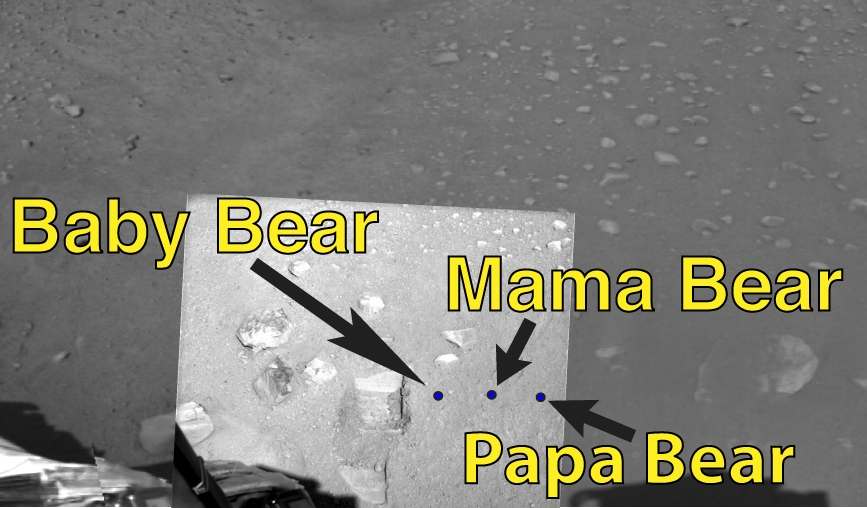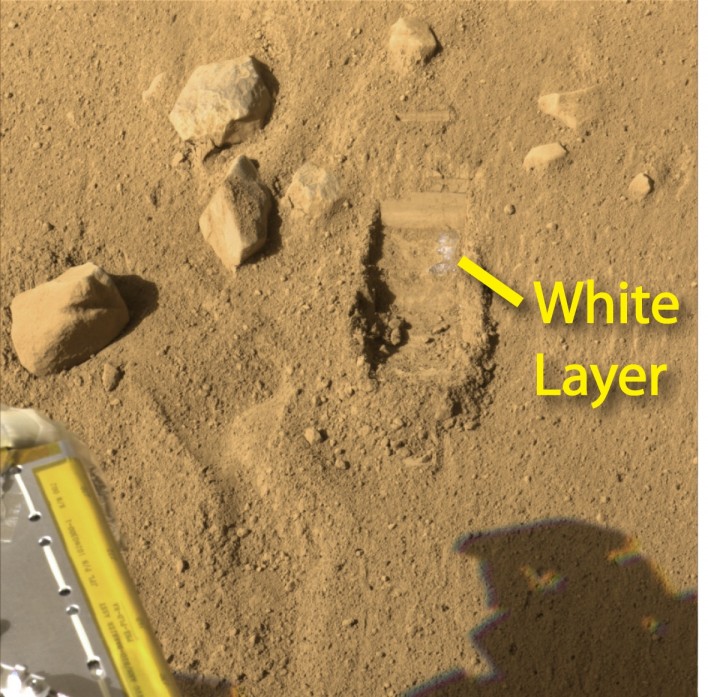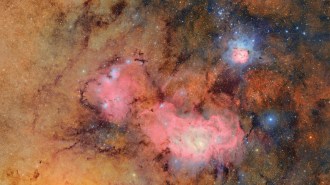- More than 2 years ago
Let the real digging begin.


Phoenix Mars Lander mission scientists have instructed its robotic arm to collect its first experimental sample. Wednesday the arm is expected to scoop up just a few pinches of Martian soil from a spot called Baby Bear, but scientists won’t know if the procedure worked until Thursday.
Once the arm completes the scoop, mission specialists will wait at least two days before telling the arm to dump the soil into TEGA, the instrument that will analyze the sample.
“First we want to make sure we have a sample in the scoop,” Peter Smith, the Phoenix mission’s principal investigator, said during a news conference. “We would also like to know that the soil has loose material and is not clumped in clods.”
The soil has to be loose because the screens that filter samples into the TEGA ovens have slits that are only 1 millimeter wide. Clumps could get caught on the screens, preventing soil from entering the ovens. The scientists, Smith said, need to be careful not to deposit the soil unless they are sure what they have is a good sample.
“We can only use the ovens once,” he said. “We get one shot.”
Images also showed more evidence that a solid layer of ice or salt could be just 4 centimeters below the Martian surface in this region. During a second test dig and dump, the robotic arm expanded the trench it first dug on Sunday. Two images that came down on Tuesday — called Sol 9 because it is the ninth day the lander has been on Mars — show a white patch in the soil remaining in the dig area, informally dubbed Dodo.
“You can see, for the first time, white material at the bottom of the trench,” said Uwe Keller, who is a co-investigator on the Phoenix mission and is responsible for the camera on the robotic arm. “The blade of the robotic arm scraped across the bottom of the trench and opened up white material to view. This is collaborating evidence that there is a hard surface underneath the soil.”
The scientists are still uncertain if salt or ice or something else makes up the hard layer. But they will have to wait until Sol 12 to begin running tests on the soil. The Phoenix mission is officially still in its characterization stage, where the scientists ensure that all the instruments are working properly. The experiment phase officially begins when the first soil sample is dumped into the TEGA instrument.
“Right now we want to know, can we get one of those samples and get it into the instrument,” Smith said.







